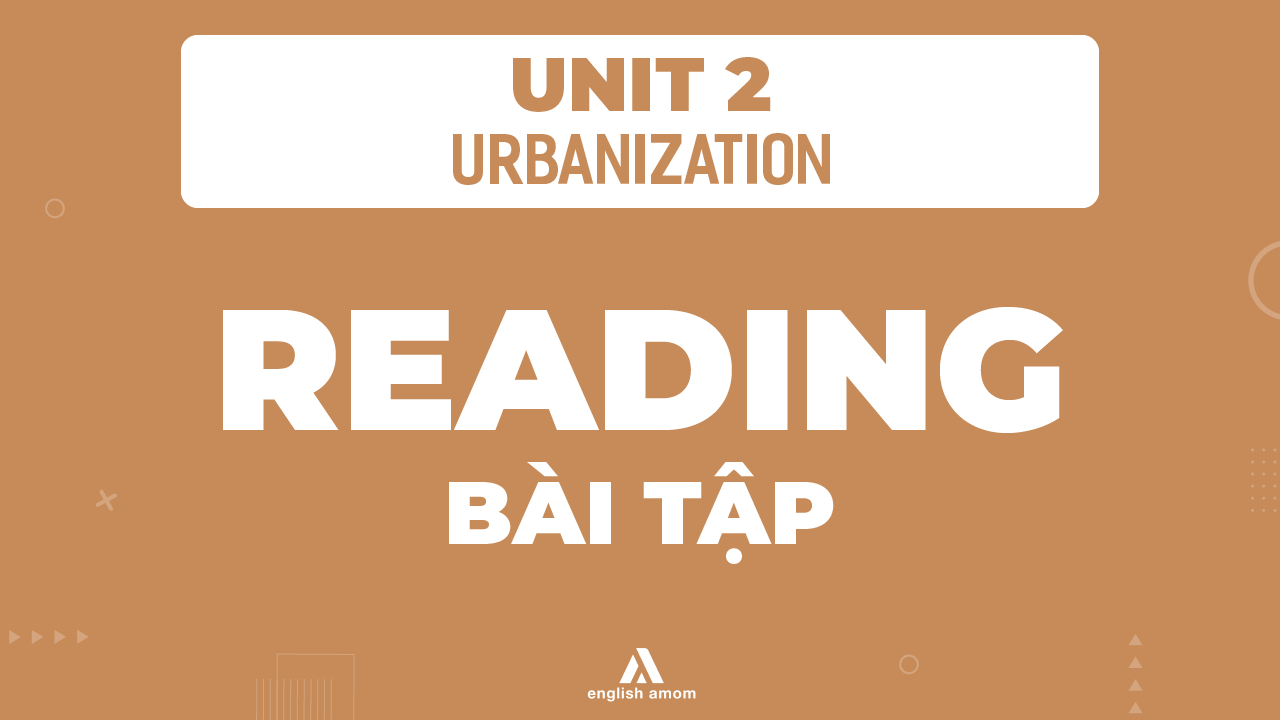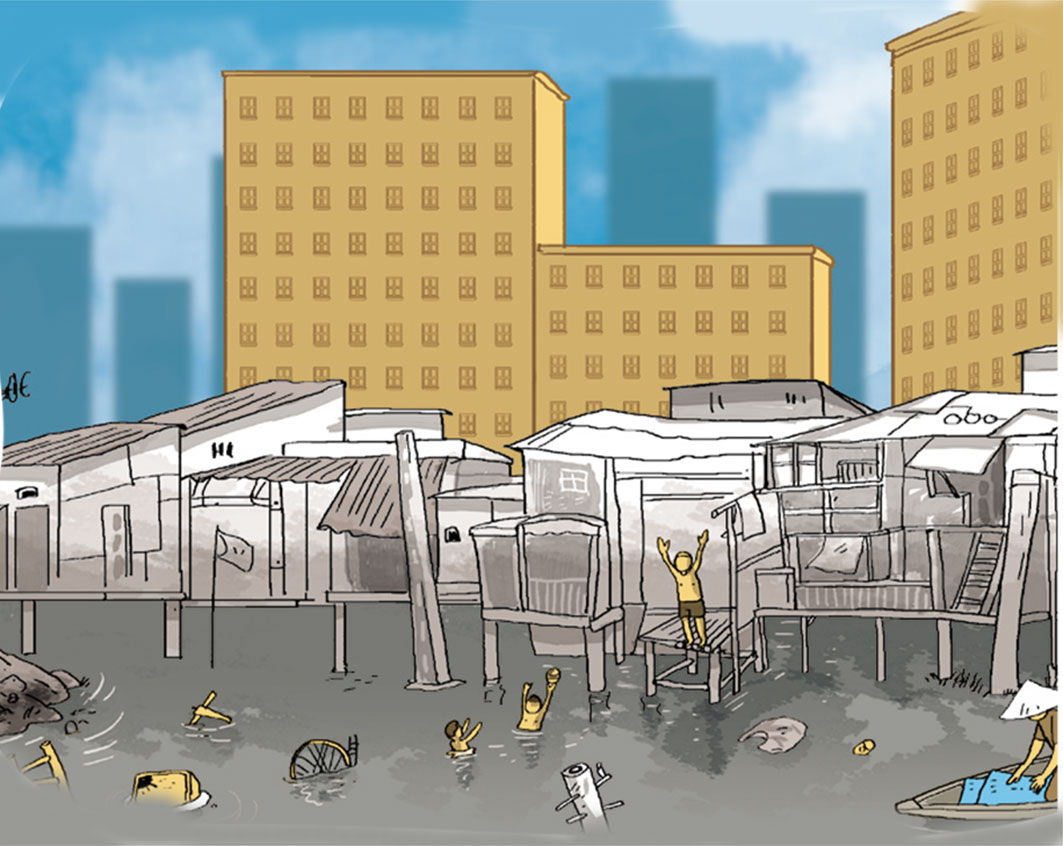
► Kênh hỏi đáp và giải thích thắc mắc kiến thức MIỄN PHÍ → truy cập LINK NHÓM: ENGLISH AMOM
► Kênh YOUTUBE hệ thống toàn bộ bài giảng CLIPS: truy cập LINK: ENGLISH AMOM CHANNEL
► Kênh TIKTOK: ENGLISH AMOM
1) Read the text about urbanisation and choose the best title.
A. Urbanisation history.
B. Causes and effects of urbanisation.
C. Challenges of sustainable urbanisation.

Urbanisation programmes are being carried out in many parts of the world, especially in densely populated regions with limited land and resources. It is the natural outcome of economic development and industrialisation. It has brought a lot of benefits to our society. However, it also poses various problems for local authorities and town planners in the process of maintaining sustainable urbanisation, especially in developing countries.
When too many people cram into a small area, urban infrastructure can't be effective. There will be a lack of livable housing, energy and water supply. This will create overcrowded urban districts with no proper facilities.
Currently, fast urbanisation is taking place predominantly in developing countries where sustainable urbanisation has little relevance to people's lives. Their houses are just shabby slums with poor sanitation. Their children only manage to get a basic education. Hence, the struggle for survival is their first priority rather than anything else. Only when the quality of their existence is improved, can they seek for other high values in their life.
Thus, sustainable urbanisation in different regions should start from different levels. For more developed regions, the focus could be on achieving a more sustainable urban life. But for less developed regions, urban development should really start with the provision of the basic human needs such as sufficient energy, clean water, housing with proper sanitation, and access to effective social infrastructure.
ĐÁP ÁN:
| C. Challenges of sustainable urbanisation. |
2) Based on the information in the text, decide whether the following statements are true (T), false (F), or not given (NG). Tick the boxes.
| T | F | NG | |
| 1. Urbanisation is the natural product of economic development and industrialisation. | |||
| 2. The advantages of urbanisation outweigh its disadvantages. | |||
| 3. Slum dwellers in developing countries understand the meaning of sustainable urbanisation. | |||
| 4. The struggle for survival is the most important thing for poor people in developing countries. | |||
| 5. Different regions should deal with different tasks to achieve sustainable urbanisation. |
ĐÁP ÁN:
| 1. T | 2. NG | 3. NG | 4. T | 5. T |
3) Look for the words in the text which mean the following:
| 1. the result or effect of an action or event (n) | ........................................................ |
| 2. creates a threat, problem, etc. that has to be dealt with (v) | ........................................................ |
| 3. using methods that do not use up or destroy natural resources (adj) | ........................................................ |
| 4. move into a small place or object so it is completely full (v) | ........................................................ |
| 5. untidy or in bad condition (adj) | ........................................................ |
| 6. the action of supplying something for use (n) | ........................................................ |
ĐÁP ÁN:
| 1. outcome | 2. poses | 3. sustainable |
| 4. cram | 5. shabby | 6. provision |

